Chili is a spice, stimulates the taste buds, provides vitamins, a small amount of protein and fiber. Besides the benefits, chili also has many harmful effects on health if eaten in excess.
1. Nutritional composition of chili peppers
Chili peppers contain many vitamins that are good for health. Chili peppers are a spice that helps enhance the flavor of dishes or simply due to personal preference. Not only that, chili peppers contain many times more nutrients than regular vegetables.
With 100g of fresh chili peppers, the body will provide 32% of vitamin A, 240% of vitamin C, 39% of vitamin B6, 4.5% of vitamin E and 11.5% of vitamin K compared to the body’s vitamin needs in a day. Just eating about 40g of fresh chili peppers will provide enough vitamin C for the body for the whole day.
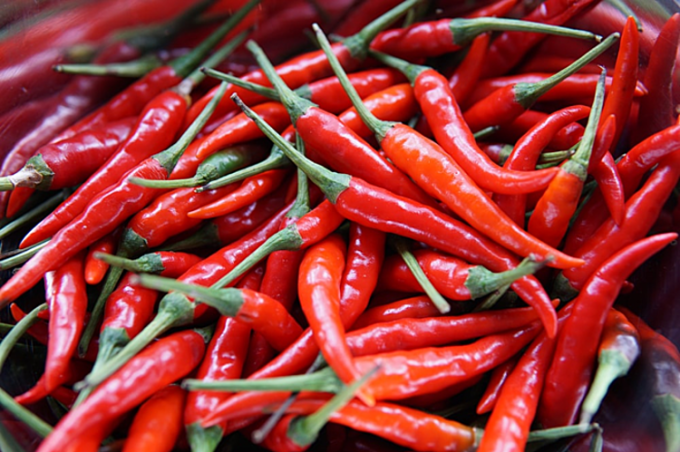
Chili is not only a spice but also contains many times more nutrients than regular vegetables.
2. Effects of chili
Ingredients in chili create pain relievers
Chili contains capsaicin, which creates a spicy taste and irritates the mucous membranes where the chili comes into contact. When the mucous membranes are irritated, they send information to the brain, which sends signals to the body to produce various substances, including endorphins, which are pain relievers. This is why many people who eat chili feel numb and spicy. It is not that chili is too spicy and makes the body “numb”, but that the body produces some pain relievers to protect the body.
A study showed that when 2.5 grams of red chili were given daily to people with heartburn, the pain became worse at the beginning of treatment for 5 weeks but improved over time.
Modern medicine is researching the ingredients in chili to create pain relievers. The hottest chili in the world today has a spiciness of 2.48 million degrees SHU. This chili pepper is a hybrid bred for medicinal purposes, not for eating.
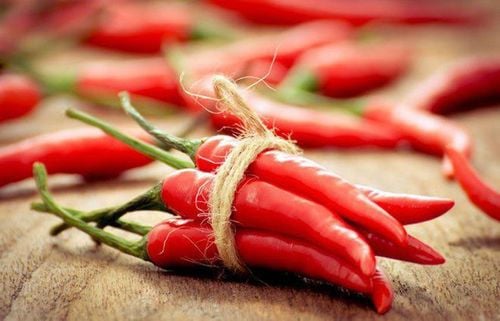
Chili has many uses
Eating chili helps support weight loss
Eating chili not only helps increase blood circulation but it also helps support weight loss. Many people have tried combining chili with diets and found that the weight loss effect is very good for the following reasons:
- First: Eating chili helps blood circulation but also helps the body increase metabolism and helps burn calories better.
- Second, eating chili produces many different hormones, these hormones also play a role in reducing appetite and burning excess fat.
- Third, eating chili can make you feel quite hot and your body will sweat, causing dehydration, which helps you drink more water and also helps cleanse your body better.
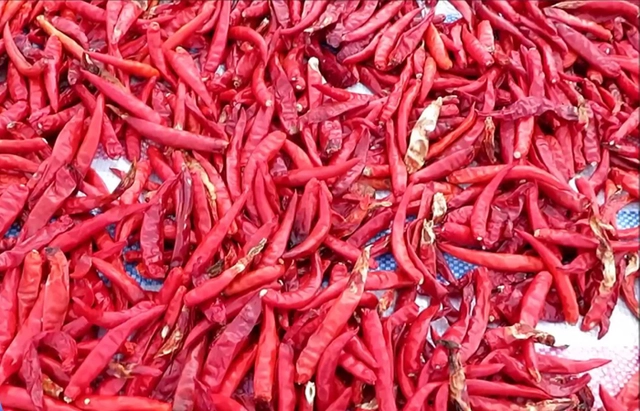
Dried Chili
3. Harmful effects of chili when eaten too much
Eating chili can cause burning in the mouth
Eating chili that is too spicy can cause burning in the mouth, loss of taste in the burned area. The capsaicin in chili when in contact with sensitive skin areas such as the oral mucosa will cause a strong stimulating reaction on the receptor cells.
Eating too much chili is harmful to the stomach and digestive system
Chili causes a spicy, burning sensation in the mouth and it also irritates the stomach lining. If you eat a lot of chili for a long time, it will definitely have a bad effect on the stomach. If you are having stomach problems such as stomach ulcers, it is best not to eat chili, eating chili will make the condition worse.
Eating chili can cause intestinal pain in some people. Symptoms may include abdominal pain, a burning sensation in the intestines, cramps and painful diarrhea. This is more common in people with irritable bowel syndrome. Chili peppers may temporarily aggravate symptoms in people who are not used to eating them regularly.
For this reason, people with irritable bowel syndrome should limit their consumption of chili peppers and other spicy foods.
Eating too much chili is not good for people with cardiovascular disease
When eating chili, the hot taste will make the heart beat faster, the blood in the body circulates faster than normal. At a moderate level, such blood circulation will help improve the circulatory and cardiovascular system, preventing blood clots that block blood vessels. If you eat chili regularly, the heart will always beat rapidly and the blood circulates faster than normal for a long time, which can cause heart failure and stroke.
Eating too much chili can cause paralysis, destroy the nervous system
The spiciness of chili not only causes the body to produce hormones, but it also stimulates the nervous system. If you eat spicy food for a long time or eat too spicy food, it will affect the nervous system, causing partial paralysis or even destroying the nervous system. There have been some cases of loss of taste or irritability and anger due to eating too much spicy food for a long time.
4. Who should not eat chili
People with hemorrhoids should not eat chili
People with external or internal hemorrhoids should not eat spicy food. Eating spicy food can cause hemorrhoids to swell and cause more pain than usual.
People with heart disease, brain disease, vascular disease, high blood pressure, chronic bronchitis, lung disease.
Chili contains substances that cause increased blood volume during circulation, rapid heartbeat. If this condition occurs for a long time, it can lead to heart failure, even death.
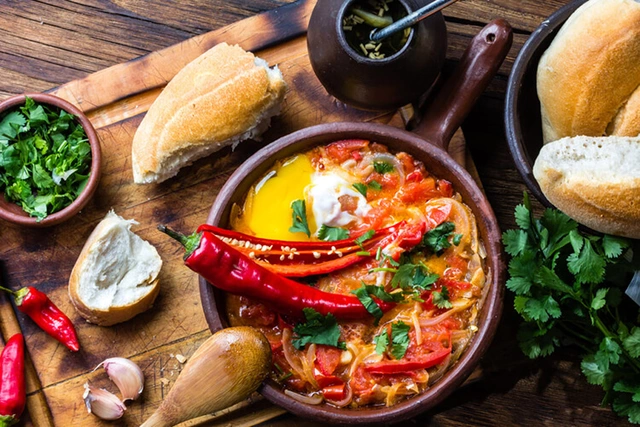
Eating spicy food for a long time and eating too much chili is not good for your health.
People with cholecystitis, gallstones
The stimulant in chili will increase gastric juice in the stomach. Too much gastric juice will cause the liver sac to contract, making it more difficult for liver juice to be secreted, leading to hepatitis and pancreatitis.
People with dermatitis, people with acne
The spiciness of chili causes heat in the body, so people with dermatitis or acne should not eat this spice because it will make the acne worse.
After surgery, there is a wound
After surgery, the patient needs time to heal the wound, so it is necessary to avoid spicy and hot foods. Meanwhile, chili is hot, easily causing ulcers and burning when eaten in large quantities. Therefore, you should use a moderate amount of chili after surgery, it is best not to eat during this time to avoid unnecessary post-operative complications.
People with kidney disease
Substances entering the body must pass through the kidneys to be excreted, so eating too spicy food will cause more or less damage to kidney cells, more seriously, it can cause kidney function degeneration.
Therefore, people with kidney disease should be careful when eating spicy foods such as chili, pepper, onion, ginger, garlic, mustard, etc. These foods all contain spicy ingredients that affect the health of the kidneys in the body.
People with hyperthyroidism
People with hyperthyroidism have a faster heart rate than normal people. Therefore, eating spicy food can increase the heart rate, making the condition worse.
Pregnant and newly born women
For pregnant women, eating spicy food does not directly affect the mother. However, when pregnant women eat spicy food, it can cause allergies in the child later. According to folk experience, when the mother eats too spicy food, the child is prone to prickly heat and internal heat.
Women who have just given birth should limit spicy foods as much as possible. Because the mother’s body is very weak at this time, eating too much spicy food will not only cause the body to become hot but also affect the function of the stomach. In particular, if the mother is breastfeeding, eating spicy chili will affect the quality of breast milk for the baby. In addition, during pregnancy and after giving birth, mothers often suffer from constipation, eating chili will make constipation worse. Therefore, it is best for pregnant and postpartum women not to eat chili.
Absolutely do not eat moldy chili powder or chili dyed with dyes
In addition to fresh chili, chili powder, also known as dried chili, is widely used. However, if chili powder is damp, there may be mold inside. Molds that grow in chili powder have been identified as potentially carcinogenic to humans when eaten in large amounts. If chili powder has a strange smell or is damp, it is best to throw it away.
Another small note, chili powder has also been found to be dyed with dyes to have a beautiful color, to preserve it for a long time, and to prevent mold, which can affect health. Therefore, when buying chili powder, you should choose chili powder with natural colors and flavors to ensure safety when using.
5. Can eating chili peppers cause death?
Carolina Reaper chili peppers have a spiciness of 1.6 – 2.2 million SHU, while Vietnamese chili peppers have the spiciest level at about 250,000 SHU.
If there is a large enough amount of capsaicin in chili peppers, it will cause anaphylactic shock and death. According to some studies, the body will react to capsaicin in chili peppers when this substance comes into contact with sensitive skin areas. If it is mild, the body will only feel hot and spicy, if it is more severe, the body will decide to kill cells in the area with capsaicin to protect other parts of the body. When the dose of capsaicin is large enough, it will cause anaphylactic shock and death.
With the human self-defense mechanism, when you eat spicy chili peppers, at a certain level before the allowable limit, the body will vomit to stop taking more capsaicin into the body. This is why eating regular peppers will not kill you. But the world’s hottest peppers are 10 times spicier than regular peppers. Even a small amount can cause anaphylactic shock due to the high concentration of capsaicin.
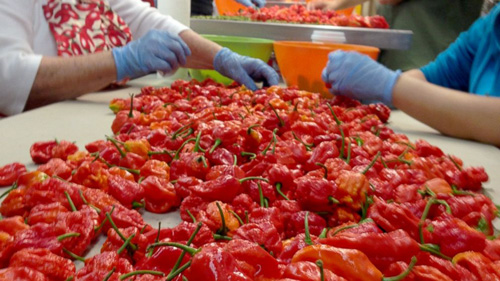
The Carolina Reaper is now the world’s hottest pepper.
6. How to relieve chili spiciness
Drink milk, hot milk is better, hot and sweet milk is even better, or yogurt or ice cream. In addition to the sweetness that reduces the spiciness, milk and dairy products contain casein that will help wash away capsaicin in seconds, and the spiciness will go away immediately.
Apply sugar to the areas where chili is stuck (if on the skin), apply it to the lips or hold it in the mouth for a short time and then swallow slowly. The substances in sugar will help neutralize and wash away the capsaicin that is sticking, helping us no longer feel spicy and hot.
In case there is no milk or sugar, drinking a little water will help wash away the capsaicin, reducing the spicy feeling.
7. How to prepare chili
Chili sauce
- Remove the stem of the chili, rinse it with water, then remove the seeds inside, then cut it into small thin slices for easy blending.
- Peel the garlic, rinse it with water and drain. Peel the onion, wash it and cut it into wedges.
- Wash the red apples and tomatoes with diluted salt water, rinse it with water again, remove the stem and cut it into wedges and remove the seeds from the mixture.
- First, add the mixture of chili, garlic, onion that was prepared earlier and 1/2 teaspoon of ground pepper and blend on high for about 3 – 5 minutes until the mixture is completely smooth.
- Next, add the mixture of tomato, red apple that was prepared earlier with 15g of tapioca starch, 60ml of apple cider vinegar and blend the mixture on high for about 5 – 7 minutes.
- Place the pan on the stove over medium heat, wait for the pan to heat up, then add 30ml of cooking oil, when the oil boils, add the ground chili and garlic mixture, stir gently, then add 75g of sugar and 3.5 tablespoons of salt.
- Stir well and continue to cook the mixture over medium low heat for another 10 minutes until the mixture boils and thickens.
- Then add the apple and tomato puree, stir gently and cook over low heat for about 35 minutes until the mixture thickens and thickens, then turn off the stove. Let the chili sauce cool down and then strain the mixture through a sieve to get a smoother chili sauce.
8. How to preserve chili
Preserve chili in the freezer
- Cut off the stem and wash the chili. Then drain the water. Put the chili in a sealed box and put it in the freezer.
- When eating, take the chili out and wash it with water, the chili will soften again. This is the best way to preserve because it will keep the chili fresh for a long time.
Preserve chili by soaking in vinegar
Cut off the stem of the chili, wash it. Then drain the water. Use a needle to poke many holes in the chili and put it in a box or jar, then pour vinegar until all the chili is covered. Crush a few cloves of garlic on top and cover tightly and put it in the refrigerator. With this vinegar soaking method, you can leave the chili whole or you can bruise the chili, the method is similar.
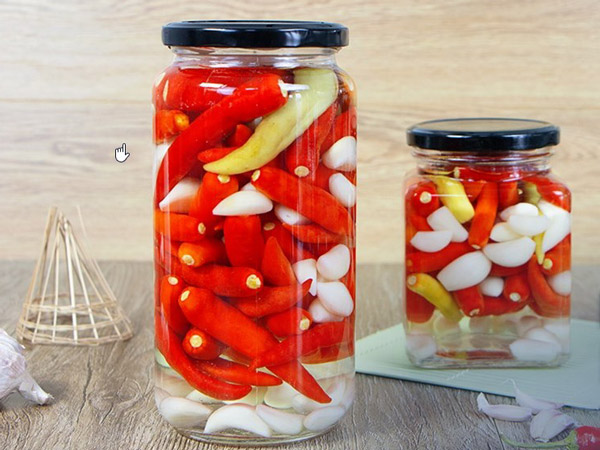
Chili vinegar soak
Preserve chili by drying
- Wash the chili and remove the stem. Use a knife to cut a few lines along the chili or you can cut it in half and remove the seeds to dry the chili faster.
- Soak the chili in warm water for about 10 minutes, then put the chili in a basket or spread it out on newspaper and dry it in the sun, dry it until the chili is dry, it may take a few days depending on the temperature of the sunlight.
How to preserve dried chili powder
For dried chili powder, we should store it in a glass jar or in a zip bag and store it in the refrigerator or in a cool, dry place. Do not leave dried chili in a humid environment because it can easily cause mold and discoloration.





